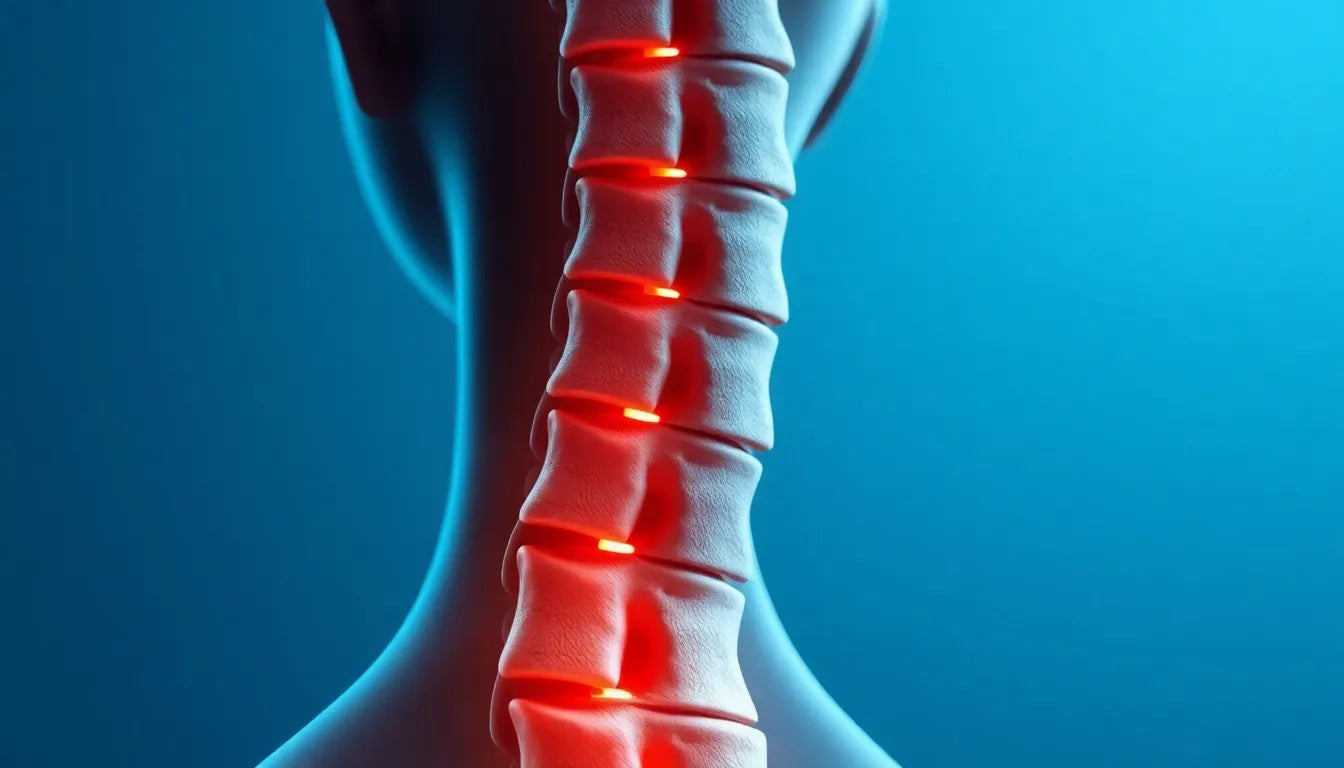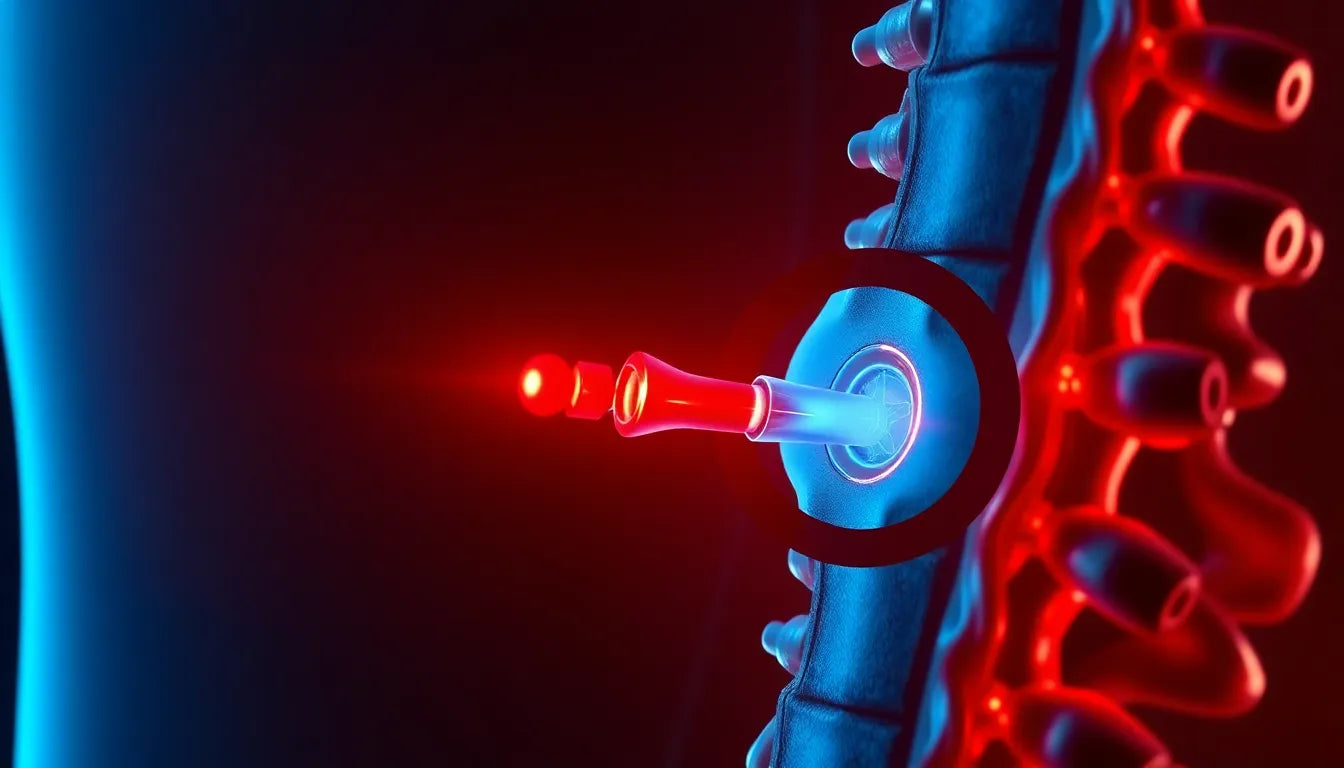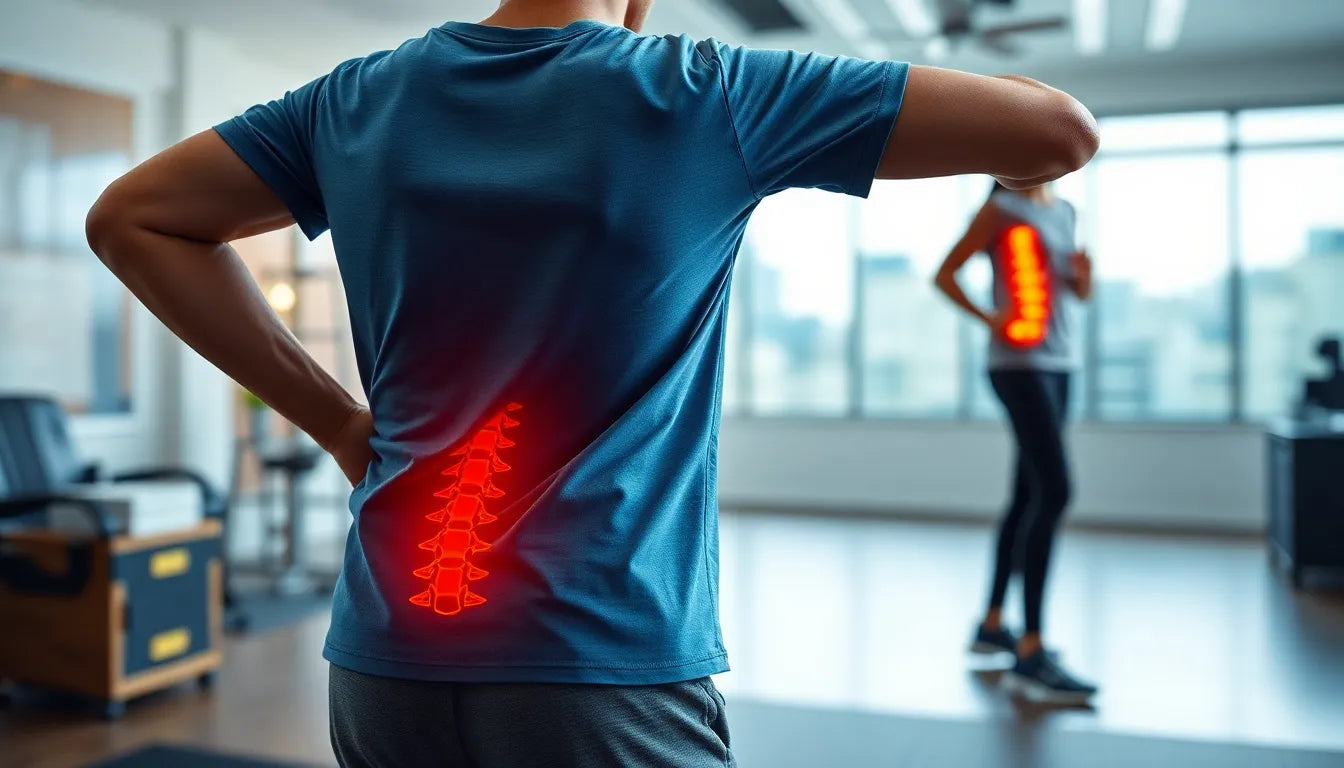Understanding the complexities of spinal health is crucial for anyone experiencing back pain or mobility issues. Among the most common spinal conditions are spinal stenosis and herniated discs, each of which can significantly impact daily life. While they may share some symptoms, distinguishing between these two conditions is vital for effective management and treatment. This brings us to the central question: which condition impacts life more severely?
initial symptoms and concerns
Both spinal stenosis and herniated discs can manifest with a range of symptoms that often prompt individuals to seek medical advice. Pain and discomfort are typical, with both conditions potentially leading to mobility issues that can disrupt everyday activities. Back pain is a common complaint, but without proper diagnosis, it can be challenging to pinpoint the exact cause, leading to potential misconceptions and ineffective treatment.
Spinal stenosis involves the narrowing of spaces within the spine, which can put pressure on the nerves traveling through the spine. This condition often develops gradually and is more prevalent in individuals over 50, primarily due to age-related degeneration. The symptoms may include pain or cramping in the back and legs, numbness, tingling, and even balance issues, which can significantly affect one's ability to perform daily tasks.
On the other hand, a herniated disc occurs when the outer layer of an intervertebral disc weakens, allowing the inner gel-like core to protrude. This can lead to localized or radiating pain, numbness, muscle weakness, and tingling, depending on the disc's location. The onset of symptoms can be sudden, often triggered by specific movements or injuries, and is most common in people aged 30 to 50.
Given the prevalence of back pain, understanding these initial symptoms and seeking a proper diagnosis is crucial. Misdiagnosis can lead to ineffective treatments and prolonged discomfort. By differentiating between spinal stenosis and herniated discs, individuals can pursue targeted therapies and interventions to manage their condition effectively.
herniated disc: an overview
The human spine is a marvel of engineering, composed of vertebrae cushioned by intervertebral discs that allow for flexibility and movement. A herniated disc occurs when the outer layer of one of these discs weakens, causing the inner gel-like core to protrude. This protrusion can press on nearby nerves or spinal tissue, leading to a range of symptoms. These symptoms often include localized or radiating pain, numbness, muscle weakness, and tingling sensations in the arms, legs, feet, or hands, depending on the disc's location. In some cases, individuals may experience severe nerve pain, such as sciatica, which is characterized by sharp, shooting pain that follows the path of the sciatic nerve down the leg.
The onset of a herniated disc is typically sudden and can be triggered by specific movements or injuries. This condition is most prevalent among individuals aged 30 to 50, but it can occur at any age due to injury or strain. The acute nature of the pain often prompts immediate medical attention, and while the symptoms can be intense, many cases of herniated discs resolve with conservative treatments such as rest, physical therapy, and medication.
spinal stenosis: the gradual narrowing
In contrast to the sudden onset of a herniated disc, spinal stenosis is a condition characterized by the gradual narrowing of the spinal canal or nerve root openings. This narrowing can lead to compression of the spinal cord and nerves, resulting in a different set of symptoms. Most commonly affecting the lower back (lumbar) or neck (cervical), spinal stenosis can cause pain or cramping in the back and legs, numbness, tingling, weakness in the limbs, and balance problems. In severe cases, individuals may experience a loss of coordination or function.
The symptoms of spinal stenosis often develop gradually and worsen over time, particularly with standing or walking. Many individuals find relief when bending forward or sitting down, as these positions can temporarily alleviate the pressure on the nerves. This condition is strongly associated with age-related degeneration and typically affects people over the age of 50. As the spine undergoes structural changes with age, the risk of developing spinal stenosis increases, leading to chronic and progressive symptoms that can significantly impact mobility and quality of life.
comparative analysis: severity and prognosis
When comparing the severity and prognosis of herniated discs and spinal stenosis, several key differences emerge. The onset of a herniated disc is typically sudden, often following a specific movement or injury, and it generally affects individuals in their 30s to 50s. The pain associated with a herniated disc is usually sharp and episodic, but many cases resolve with conservative treatment. In contrast, spinal stenosis develops gradually, primarily affecting individuals over 50. The pain is more likely to be achy and progressive, often worsening with activity and improving with rest.
The risks associated with each condition also differ. A herniated disc can lead to nerve compression and muscle weakness, while spinal stenosis poses a greater risk of functional impairment and mobility issues. Prognosis varies, with herniated discs often resolving conservatively, whereas spinal stenosis is typically chronic and progressive, sometimes necessitating surgical intervention.
Ultimately, the impact of each condition on an individual's life depends on various factors, including age, overall health, severity of symptoms, and response to treatment. While herniated discs can cause severe, acute pain, they are often manageable with non-surgical approaches. Spinal stenosis, on the other hand, tends to have a more significant long-term impact due to its progressive nature, particularly in older adults. Understanding these differences is crucial for individuals seeking to manage their spinal health effectively.
Impact on quality of life
The impact of spinal stenosis and herniated discs on quality of life can differ significantly. A herniated disc, while capable of causing intense and acute pain, often improves with conservative treatments such as physical therapy, medication, and rest. Many individuals find that their symptoms diminish over time, allowing them to return to their normal activities. The episodic nature of the pain means that, although severe at times, it is often manageable and may not lead to long-term disability.
In contrast, spinal stenosis tends to have a more profound impact on daily life, particularly for older adults. As the condition progresses, it can lead to persistent mobility issues, making it difficult for individuals to perform everyday tasks. The gradual narrowing of the spinal canal can result in chronic pain, cramping, and weakness, which can significantly hinder one's ability to stand or walk for extended periods. This ongoing decline in function can lead to a reduction in independence and quality of life, especially for seniors.
Treatment approaches
Both spinal stenosis and herniated discs can initially be managed with non-surgical treatments. Physical therapy is often recommended to strengthen the muscles supporting the spine and improve flexibility. Medications, such as anti-inflammatories and pain relievers, can help manage symptoms. In some cases, steroid injections may be used to reduce inflammation and alleviate pain.
When conservative treatments are ineffective, surgical options may be considered. For herniated discs, a discectomy, which involves removing the protruding portion of the disc, can relieve pressure on the nerves. For spinal stenosis, decompressive surgery, such as a laminectomy, may be necessary to create more space in the spinal canal and alleviate nerve compression. These surgical interventions are generally considered when symptoms significantly impair quality of life and conservative measures fail to provide relief.
Clinical perspective and individual variability
The impact of spinal stenosis and herniated discs varies widely among individuals. Factors such as age, overall health, severity of symptoms, and response to treatment all play a role in determining how these conditions affect one's life. While spinal stenosis is often more debilitating long-term due to its progressive nature, herniated discs can cause severe but often temporary pain. The choice of treatment and the prognosis for each condition depend on a thorough clinical assessment and a tailored approach to management.
Conclusion
In summary, both spinal stenosis and herniated discs can significantly impact an individual's life, but in different ways. Spinal stenosis tends to have a greater long-term impact, particularly in older adults, due to its chronic and progressive nature. Herniated discs, while capable of causing severe pain, often improve with conservative treatment and are frequently manageable without surgery. Professional assessment is crucial for accurate diagnosis and the development of a personalized treatment plan, ensuring the best possible outcomes for those affected by these spinal conditions.
Frequently Asked Questions
What are the main differences between spinal stenosis and a herniated disc?
Spinal stenosis involves the gradual narrowing of the spinal canal, leading to nerve compression and chronic symptoms. A herniated disc occurs when the outer layer of a disc weakens, allowing the inner core to protrude and press on nearby nerves, often causing acute pain.
Can a herniated disc heal on its own?
Yes, many herniated discs improve over time with conservative treatment such as rest, physical therapy, and medication. In some cases, symptoms may resolve without surgical intervention.
What are the long-term effects of spinal stenosis?
Spinal stenosis can lead to persistent pain, mobility issues, and functional decline, particularly in older adults. The condition is often progressive, potentially resulting in reduced independence and quality of life.
How is each condition diagnosed?
Diagnosis typically involves a combination of medical history, physical examination, and imaging studies such as MRI or CT scans to assess the extent of nerve compression and structural changes in the spine.
What lifestyle changes can help manage these conditions?
Maintaining a healthy weight, engaging in regular low-impact exercise, and practicing good posture can help manage symptoms. Physical therapy can also be beneficial in strengthening the muscles supporting the spine and improving mobility.
```html
Sources
- Nerve Disc Institute. "Herniated Disc Symptoms and Treatment."
- Barricaid Blog. "Spinal Stenosis vs. Herniated Disc: Understanding the Differences."
- Spine INA. "Understanding Spinal Stenosis and Herniated Discs."
- Elite Spine Centres. "Herniated Disc Symptoms and Diagnosis."
- Florida Surgery Consultants. "Comparing Spinal Stenosis and Herniated Discs."
- Spine.md. "Treatment Options for Spinal Stenosis."
- ANSSI Wellness. "Managing Spinal Stenosis and Herniated Discs."


















